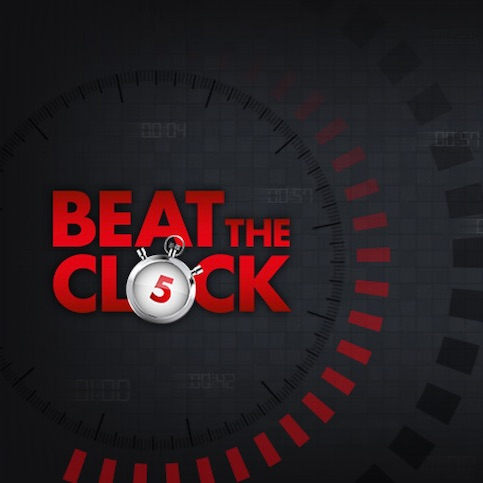Midnight Comes for PokerStars’ Beat the Clock
When I was a toddler, I used to watch “The Price is Right” all the time. My mom told me it was right up there with “Sesame Street” and “Mister Rogers’ Neighborhood” with me; if she needed to do some things around the house, she could plop me down in front of the television and know I was good for an hour. One of the most lasting games on that show has been the Clock Game, a game in which contestants try to beat the clock by guessing the prices of two prizes within 30 seconds. It’s actually an extremely easy game, but it is entertaining seeing people’s brains churn as they race against the second hand. And now for the segue. Another “Beat the Clock” game has seen its time run out, though (I thought of that line myself), as PokerStars has purged the game from its roster less than a year after it was added.
Citing “the need to cater to evolving player tastes,” PokerStars issued a brief statement about the decision to clean Beat the Clock’s clock (don’t stop me now):
We will be making some changes to the client which will involve the removal of Beat The Clock. PokerStars has decided to shelve the timed Sit & Go format to make way for new products that we wish to feature more prominently within the client. This decision has also in part been dictated by the need to cater to evolving player tastes, which inevitably change over time. The game will be removed later today.
Like pretty much all of the new game formats PokerStars has introduced over the last few years, Beat the Clock was designed to appeal to recreational players, those who want lots of action in a reasonable amount of time.
 Beat the Clock games were 48-player Sit-and-Go’s, so right off the bat, they were fairly unique, as Sit-and-Go’s that large are not the norm on internet poker sites. On top of that, they were of the Zoom Poker variety, so as soon as a player was out of a hand, he or she was taken away to a new seat/table to play the next hand with a new set of players. Blinds and antes increased every minute.
Beat the Clock games were 48-player Sit-and-Go’s, so right off the bat, they were fairly unique, as Sit-and-Go’s that large are not the norm on internet poker sites. On top of that, they were of the Zoom Poker variety, so as soon as a player was out of a hand, he or she was taken away to a new seat/table to play the next hand with a new set of players. Blinds and antes increased every minute.
Where the beating of the clock came into play was that the games only lasted five minutes, unless 47 players were eliminated before the time ended (I would imagine that never happened). When the time ran out, everybody who was still in the tournament received a payout in proportion to how their chips stack related to the total chips in play. Thus, anyone who had more than their starting stack made a profit (taking into account only the buy-in; tournament fees mean the break-even stack would be a little higher).
It is easy to see the appeal of Beat the Clock and therefore why PokerStars introduced it last fall. The flat, five minute duration is great for people who want to play as complete of a game of poker as possible while not having to worry about when they will be done. It’s not the perfect parallel, but when I used to play online poker regularly (RIP USA online poker), I would sometimes enter a multi-table tourney and actually lament my amazing luck when I actually made a deep run, as I would risk having to sit out or even quit in order to pick up my kids from pre-school (I didn’t have a smartphone at the time and I don’t even think there was a mobile app back then).
So knowing exactly when you are going to be done with a tournament is great for those who can’t or don’t want to commit to lengthy uncertainty.
That everyone gets cash put back into their Stars accounts is great for recreational players, as well. Obviously, not everyone actually profits, but anyone who can go five minutes without busting will see some sort of reward, which can be very satisfying, even if means a net-negative. Players’ money lasts longer in Beat the Clock tournaments, as fewer people probably walk away empty handed.
And Beat the Clock games were probably full of action. Because you actually had to build some chips in such a short period of time with rapidly escalating blinds, players had to take some shots right from the jump. Nobody could play like me and nit it up, waiting for that big pocket pair before getting involved. Being too patient is just going to take your stack below its starting point and that’s not a recipe for profit. Play those connectors from early position and just go for it.
But Beat the Clock must not have had the following that PokerStars had wanted and now with the fancy, new Power Up game coming down the pike, PokerStars wanted to clear some space in the lobby. I will miss you, Beat the Clock, even though we never actually met.



















COMMENTS